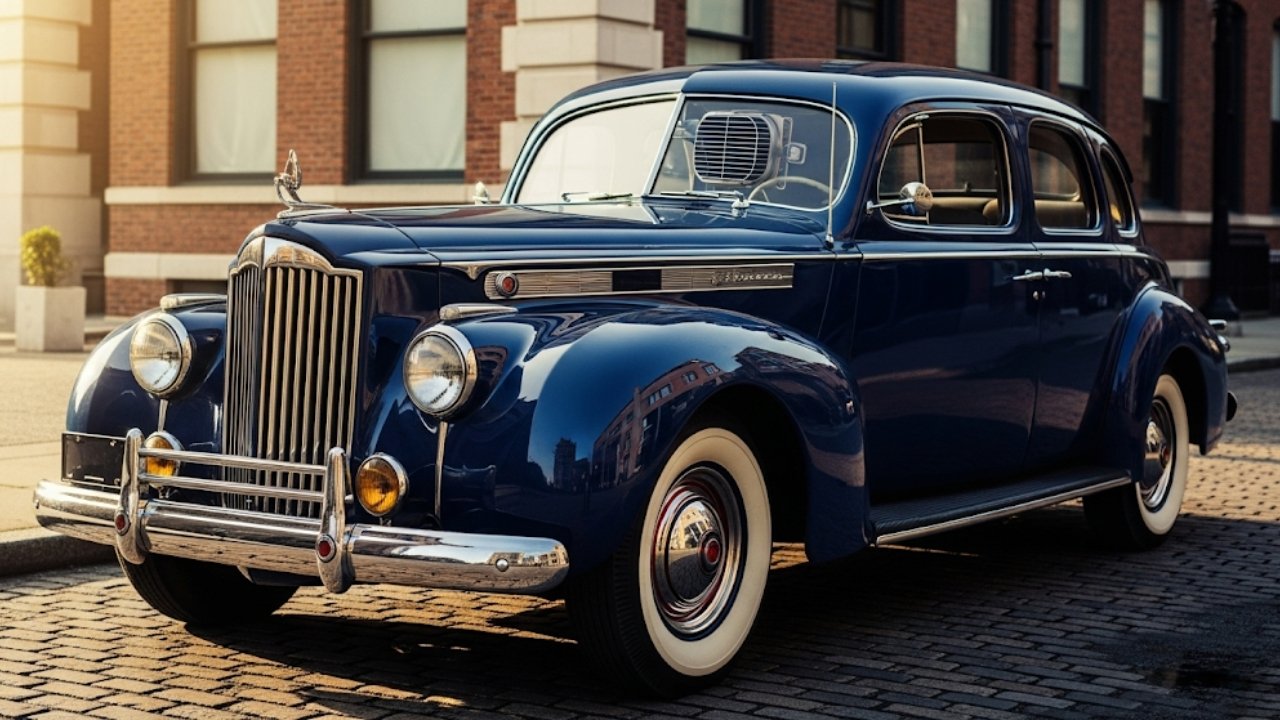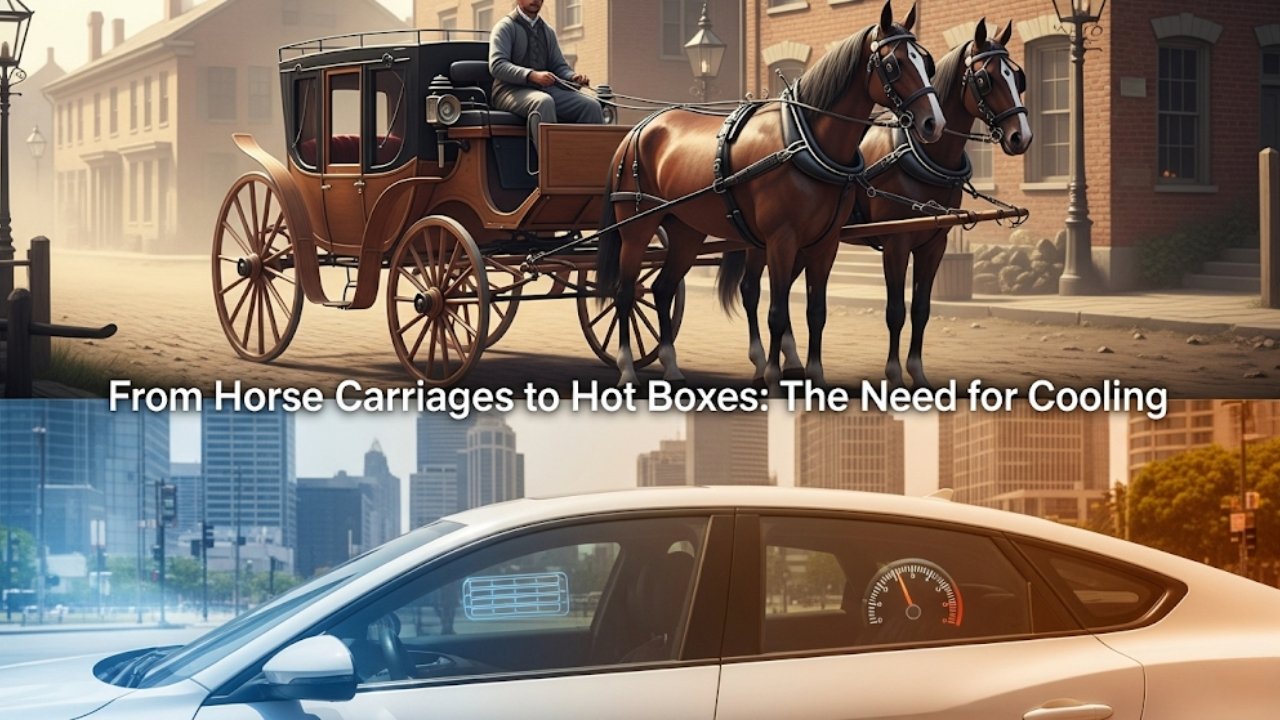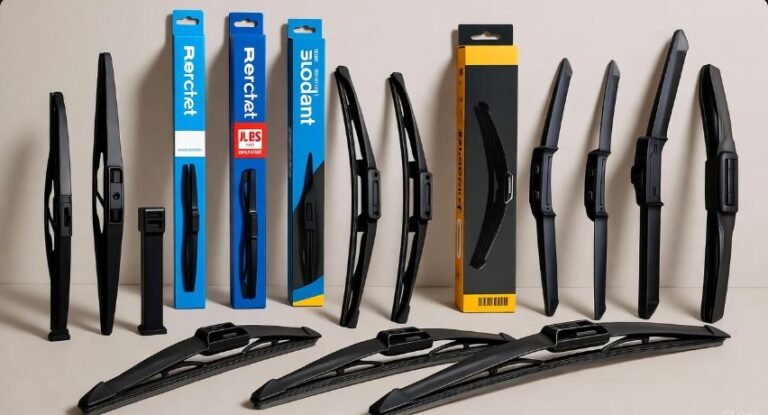First Car With Air Conditioning

Introduction: When Cars Were Hot, Literally
Imagine driving across a desert in July with no air conditioning. Windows down. Shirt drenched. Skin sticking to the seat. That was the norm for early motorists.
Today, the hum of a car’s AC is something we barely notice. It kicks in as soon as we twist the key. We take it for granted, don’t we?
But rewind time just a few decades, and the idea of an air-conditioned car was like dreaming of a flying vehicle. The first car with air conditioning was not just a technical marvel—it was a turning point in how we experience travel. Before it, the open road wasn’t always a breezy escape. It could be stifling, exhausting, and sometimes unbearable.
In this article, we’re diving into the story behind that cool evolution. From sweaty rides to climate-controlled cabins, you’ll learn where it all began, how it evolved, and what it means today.
From Horse Carriages to Hot Boxes: The Need for Cooling

By the early 1900s, things started changing. Cars got roofs. Doors. Glass windows. More comfort, yes—but also more heat trapped inside.
You know that sensation when you enter a parked car on a sunny day, and it feels like an oven? That’s what people dealt with on every ride. Now imagine wearing layers of wool, hats, and gloves—because that was the fashion of the time.
Back then, the idea of a climate system in cars was unheard of. Yet inventors were curious. If homes and buildings could be cooled, why not vehicles?
The invention of the first air cooling systems for buildings, especially by Willis Carrier, laid the groundwork. But making it small and stable enough for a car? That was a different beast entirely.
When Was Air Conditioning Invented for Cars?
To answer that, we need to go back to 1939—a time when luxury meant something more than leather seats.
That year, Packard, a premium automaker from New York, introduced something no other manufacturer had dared before: an optional air conditioning system in its cars. This wasn’t just a fan or a vent. It was an actual climate control unit—bulky, yes, but functional.
The first car with air conditioning was a Packard, and the system was installed by a third-party company called Bishop and Babcock Co. It was called the “Weather Conditioner,” and for those lucky enough to afford it, it was like riding in a refrigerator on wheels.
But not all that glitters is gold.
Why It Failed to Take Off:
-
Too Expensive: Only the wealthiest could afford it.
-
Too Big: The unit took up half the trunk.
-
Too Unreliable: It needed frequent maintenance.
By 1941, the dream fizzled. Packard discontinued the system. But the idea? That was just getting warmed up.
The Aftermarket Boom: A DIY Revolution
When World War II ended, soldiers returned home, and the economy boomed. People had money to spend—and they wanted comfort.
Though car manufacturers still hesitated to make AC standard, aftermarket companies stepped in. You could now get an AC system fitted into your car after purchase. It wasn’t cheap, but it was doable.
Interestingly, another invention called the “car cooler” also gained popularity. It was a non-electric unit that sat on the window and used evaporative cooling. Not as effective as true AC, but better than nothing on a hot summer day.
By the early 1950s, a few big carmakers took notice.
The Mass Adoption Begins: Cool Becomes Common
Things really shifted in 1953 when General Motors (GM) made air conditioning available in nearly all its models. Not standard yet, but definitely accessible.
One year later, Nash Motors took things further. Thanks to a merger with Kelvinator (a home appliance company), Nash introduced the “All-Weather Eye” in its Ambassador model.
This was a big leap. Why?
-
Compact Design: It was lighter—just 60 kg.
-
Front-Mounted: Better airflow, easier access.
-
Cost-Efficient: More affordable for average families.
By mid-decade, Pontiac and Cadillac followed Nash’s footsteps. And in 1964, Cadillac once again raised the bar by offering the first automatic temperature control system in cars.
Now, drivers didn’t just get cold air—they could set their preferred temperature and let the system do the rest.
Air conditioning was no longer a luxury. It was becoming a lifestyle.
Table: Milestones in the History of Car AC
| Year | Milestone | Key Player |
|---|---|---|
| 1939 | First car with AC | Packard & Bishop and Babcock Co. |
| 1941 | AC discontinued due to cost | Packard |
| Late 1940s | Rise of aftermarket AC systems | Independent garages |
| 1953 | Mass production of AC systems begins | General Motors |
| 1954 | Compact, efficient system introduced | Nash Motors (All-Weather Eye) |
| 1964 | First automatic climate control | Cadillac |
| 1970s | Environmental concerns rise | Entire industry |
| 1996 | R12 refrigerant banned | Global regulations |
| 2000s | AC becomes standard in most cars | Global carmakers |
The Green Backlash: How the 70s Changed the Game
Just as AC was becoming a must-have, the world started waking up to its environmental cost. Research revealed that the chlorofluorocarbons (CFCs) used in AC systems were damaging the ozone layer.
Suddenly, the very thing keeping us cool was heating up the planet.
In the 1970s, there was a visible shift. Many car buyers opted out of AC. It wasn’t just about price anymore—it was about the planet. Vinyl seats became sweat magnets again.
Fortunately, the industry didn’t stand still.
The Solution?
-
By the early 1990s, automakers started replacing R12 refrigerant with R134a.
-
R134a didn’t harm the ozone layer, though it still had some environmental impact.
-
By 1996, R12 was banned in most parts of the world.
This proactive switch helped AC bounce back quickly. Most people didn’t even notice the change—except for those who owned older cars and struggled with retrofits.
Global AC Culture: USA vs. Europe
By the 1980s, car air conditioning was everywhere in the U.S. You could hardly find a car without it.
But in Europe? That was another story.
In Europe:
-
Roads were shorter, temperatures milder.
-
Fuel economy was a bigger concern.
-
AC was considered a luxury—not a necessity.
In fact, less than one-third of European cars had AC as standard even in the early 2000s.
That’s wild, right?
But as global temperatures rose and consumer demands evolved, Europe caught up. Today, only the most budget-conscious cars are sold without air conditioning.
And even then, most buyers prefer to upgrade.
Modern Advancements: AC Gets Smarter and Greener
Fast forward to the 21st century, and car air conditioning is no longer just a box that blows cold air. It’s an intelligent climate system.
Modern AC units are:
-
Energy-efficient: They use sensors to regulate airflow and minimize energy waste.
-
Integrated: They work with heating systems and even seat ventilation.
-
Customizable: Dual-zone and tri-zone climate control let passengers set their own comfort level.
In fact, some luxury models now come with ionizers, humidity sensors, and even fragrance diffusers! That’s a long way from the bulky trunk unit in the first car with air conditioning.
And it’s not just about convenience anymore. Modern AC systems also filter dust, smoke, allergens, and airborne bacteria. So when you’re riding in a new car today, you’re not just staying cool—you’re breathing clean.
Electric Cars and the Cooling Challenge
Electric vehicles (EVs) brought a fresh twist to the AC story. Unlike gas-powered cars, EVs don’t have an engine to generate excess heat. That means AC systems need to be smarter about power usage.
Early EVs had a big problem: using the air conditioner drained the battery quickly. Not ideal when you’re trying to stretch your range.
But now, manufacturers have adapted with clever tech:
-
Heat pump systems that both heat and cool efficiently.
-
Solar-powered AC systems for idle cooling.
-
Pre-conditioning features that allow the car to cool down before you even get in—using electricity from your home charger.
Cars like the Tesla Model S, Nissan Leaf, and Hyundai Ioniq showcase how far we’ve come. Their climate systems are futuristic, eco-friendly, and incredibly user-centric.
Why the First Car With Air Conditioning Was a Game-Changer
Let’s pause for a second and really appreciate what Packard did back in 1939.
Yes, the idea flopped commercially. Yes, it was expensive. But it set the wheels in motion—literally.
Imagine what it took:
-
Reworking the car’s entire design to fit a cooling system
-
Partnering with a third-party manufacturer to install it
-
Marketing a new concept to customers who had never heard of climate control
That’s vision. That’s innovation. Without Packard’s bold move, we might still be sweating on vinyl seats.
Their efforts changed how we look at comfort, and over time, air conditioning became a non-negotiable part of modern driving.
Fun Facts You Didn’t Know About Car AC
Let’s chill out with some cool trivia:
-
The first Packard AC unit cost around $274—which would be over $5,000 today.
-
The “All-Weather Eye” from Nash weighed only 60 kg, while older units could be twice that.
-
Cadillac’s 1964 climate control system allowed users to “set and forget” their desired temperature.
-
Some old-school aftermarket AC systems required a bucket of water to function!
-
In Japan, early AC systems were considered wasteful and weren’t widely adopted until the 1980s.
These little details make the story of car AC not just technical—but truly human.
A Cool Timeline Recap: Firsts in Car Air Conditioning
Here’s a quick visual breakdown for the memory bank:
| Event | Year | Why It Matters |
|---|---|---|
| First factory-installed car AC | 1939 | Packard changed the game |
| AC discontinued temporarily | 1941 | Cost and complexity issues |
| Rise of aftermarket AC | 1940s | People wanted cool, no matter what |
| GM offers AC in most models | 1953 | Start of mass access |
| Nash’s compact AC design | 1954 | Affordable, efficient, front-mounted |
| First automatic AC controls | 1964 | Cadillac made it seamless |
| R12 refrigerant banned | 1996 | Environmental impact acknowledged |
| AC standard in EVs | 2020s | Sustainability meets comfort |
Why AC Became Standard: Beyond Comfort
AC wasn’t just about luxury. Over time, it became essential for:
-
Driver safety: Heat exhaustion can affect reaction time.
-
Window defogging: Especially in colder or humid climates.
-
Passenger well-being: Especially for babies, elderly people, and pets.
-
Interior longevity: Reduces wear and tear on materials.
With this functionality, AC went from being a “nice to have” to a “must-have.” Car sales actually soared in hot regions once models with factory-installed AC became common.
In short? The first car with air conditioning paved the way for vehicles that don’t just move you—they comfort you.
The Road Ahead: What’s Next for Car AC?
Looking at the future, car air conditioning is getting even smarter. Here’s what we’re likely to see soon:
-
AI-driven systems that predict your comfort needs.
-
Climate profiles saved to your driver account—just like your seat and mirror settings.
-
Eco-mode cooling that balances energy use and passenger comfort.
-
Integration with wearables to monitor your body temperature and adjust AC automatically.
And as electric and autonomous cars take over, the idea of “climate zones” for each passenger will become the norm. Imagine stepping into a car where your side knows you prefer 22°C and soft airflow, while your friend’s side is set to 18°C with turbo blast.
That’s not fantasy. That’s the next upgrade in comfort tech.
FAQs: All You Want to Know About Car Air Conditioning History
1. What was the first car with air conditioning?
The first car with air conditioning was a 1939 Packard. The system was installed by Bishop and Babcock Co., and it was called the “Weather Conditioner.”
2. Why did the Packard AC system fail?
It was too expensive, bulky, and unreliable. It also took up most of the trunk space and required frequent servicing.
3. When did AC become common in cars?
AC became widespread in the 1950s when manufacturers like GM and Nash began offering efficient, affordable systems.
4. What refrigerant was first used in car AC?
The early systems used R12 refrigerant (CFCs), which was later banned for damaging the ozone layer.
5. What replaced R12 refrigerant?
R134a became the industry standard after 1996. It’s more eco-friendly and doesn’t deplete the ozone.
6. Do all cars today come with AC?
Most cars today come with factory-installed AC, except for some budget or stripped-down models in limited markets.
7. Is car AC different in electric vehicles?
Yes. EVs use more energy-efficient systems and often include features like heat pumps and pre-conditioning to save battery life.
8. Was Europe slow to adopt car AC?
Yes. Cultural and climate factors meant many European cars didn’t include AC until the 2000s. Today, it’s standard in most new models.
Final Thoughts: A Cool Legacy That Keeps Getting Better
Who would have thought that something as simple as cold air could completely redefine the way we drive?
From the first car with air conditioning to today’s AI-integrated, eco-conscious systems, we’ve come a long way. It’s not just about staying cool anymore—it’s about safety, health, and even luxury.
It took decades for this feature to become standard. But today, we wouldn’t dream of buying a car without it.
Whether you’re zipping through Dhaka traffic or cruising down the California coast, your car’s AC is doing more than you think—it’s protecting your comfort, your focus, and your peace of mind.
So next time that cold breeze hits your face on a sunny afternoon, give a silent nod to the 1939 Packard—the car that made it all possible.





